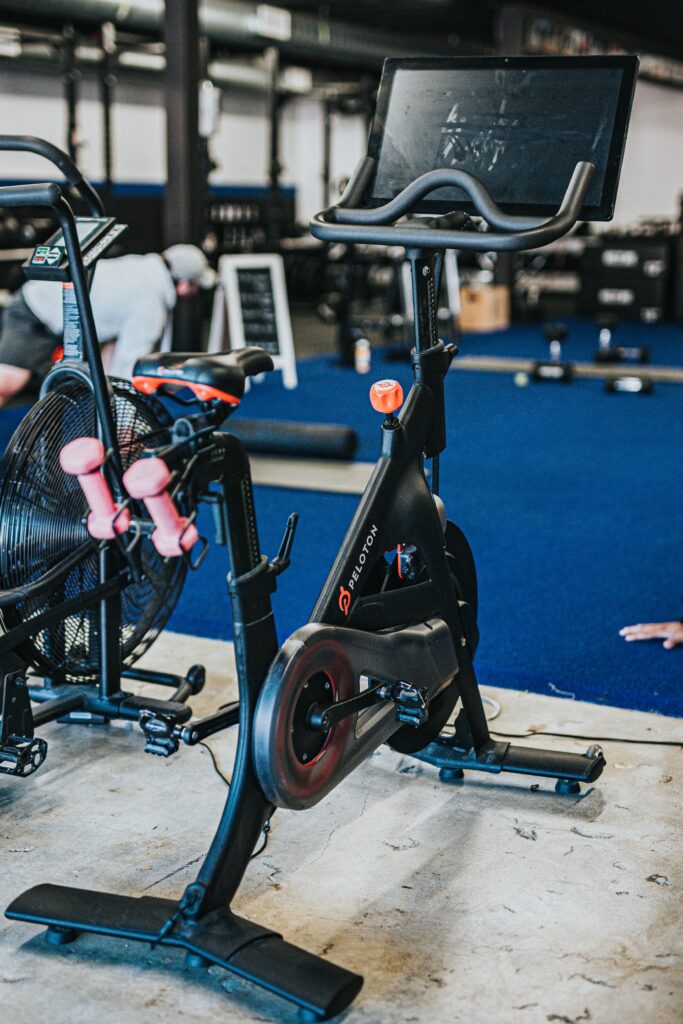Unleash Your Running Potential: Why Stationary Cycling Is Beneficial

As a runner, when we head to the gym, our typical destinations are the weightlifting area or the treadmills, often overlooking other workout equipment. However, each type of equipment, including stationary cycling, offers unique benefits. Using other workout equipment is an opportunity to unleash your running potential while helping to avoid injury.
Stationary cycling is a beneficial cross-training activity that can significantly enhance a runner’s overall fitness. Let’s delve into the benefits of stationary cycling and explore how it can be used this winter to boost fitness and aid in running the fastest race yet. If you are looking for other indoor activities this winter, consider rowing!
Benefits of Stationary Cycling for Runners
Low-Impact Alternative to Running
Running is a high-impact sport that exerts significant stress on the joints, particularly the hips, knees, and ankles. One of the primary benefits of stationary cycling for runners is its low-impact nature. High mileage with running can lead to wear and tear or even injuries.
In contrast, stationary cycling offers a cardiovascular workout that minimizes joint impact, making it an ideal alternative for runners recovering from injuries or looking to reduce the risk of overuse injuries.
Enhanced Cardiovascular Fitness
Cross-training is an effective way to boost cardiovascular fitness without the high impact that running brings. Stationary cycling complements running by exercising the heart and lungs differently. While running focuses on endurance, stationary cycling emphasizes sustained effort, improving a runner’s cardiac efficiency.
This cross-training effect can lead to improved performance during runs, as it enables maintaining a steady pace with a lower heart rate.
Improved Muscle Endurance and Strength
Stationary cycling targets different muscle groups compared to running, primarily the quadriceps, hamstrings, and glutes. Strengthening these muscles allows runners to improve their running economy, meaning they use less energy to maintain the same pace. This is particularly beneficial in the later stages of a race when muscle fatigue is common. Plus, adding resistance in cycling aids in building muscle endurance, crucial for hill running and sprint finishes.
Increased Flexibility in Training
As winter approaches, weather conditions can impact training routines. In icy environments, it’s sometimes necessary to move workouts indoors. Stationary cycling provides a convenient and flexible indoor alternative, ensuring that runners can maintain their cardiovascular fitness regardless of weather.
The ability to control resistance and pace on a stationary bike allows for customized workouts that can simulate various running terrains and intensities.
Enhanced Recovery and Active Rest
Active recovery is important for runners, particularly following intense training sessions or races. Stationary cycling serves as an excellent means of improving muscle recovery, facilitating blood flow to the legs without excessive strain. While hard workouts on the bike build cardiovascular fitness, easier sessions can aid in active recovery, helping to flush out lactic acid and reduce muscle stiffness, thus accelerating the recovery process. A light cycling session is an effective way to keep the legs moving on rest days without overexertion.
Better Running Form and Efficiency
Stationary cycling can contribute to improved running form. The cycling motion promotes a full range of motion in the hip joint, leading to increased flexibility and stride efficiency in running. Additionally, maintaining proper posture on the bike—with a straight back and engaged core—can translate into better running posture, reducing the risk of back pain and other related issues.
Mental Stamina and Endurance
Stationary cycling can be mentally challenging, especially during longer sessions. This mental toughness developed on the bike is beneficial for runners, particularly in endurance events like marathons, where mental resilience is as crucial as physical endurance. The focus and determination needed to complete a challenging cycling workout can translate into a stronger mental approach to running.
Beyond the Treadmill: Elevate Your Running Game with Stationary Cycling
Unleashing your running potential by incorporating stationary cycling into a running routine will provide numerous benefits, ranging from injury prevention and improved muscle strength to enhanced cardiovascular fitness and mental toughness. It provides a safe workout option when outdoor conditions are unsuitable. Whether used as a primary training tool or as an addition to running, stationary cycling is a beneficial inclusion in any runner’s routine, enhancing overall fitness and performance.
ADVERTISEMENT

Hollie is a runner, hiker, swimmer, residing in California. She has worked in run specialty for nearly 8 years and has fit hundreds of people for shoes. Outside of the running world, she enjoys the general aviation world, her two cats, and spending time with her spouse.









